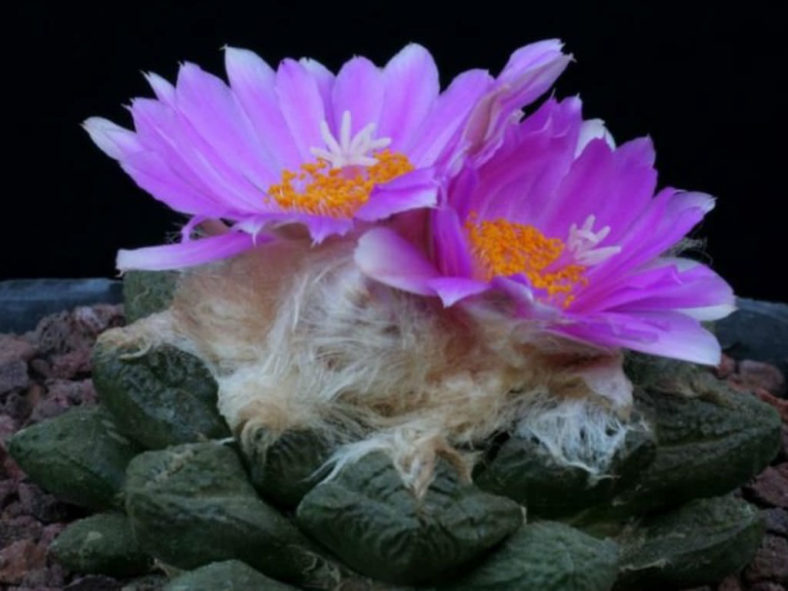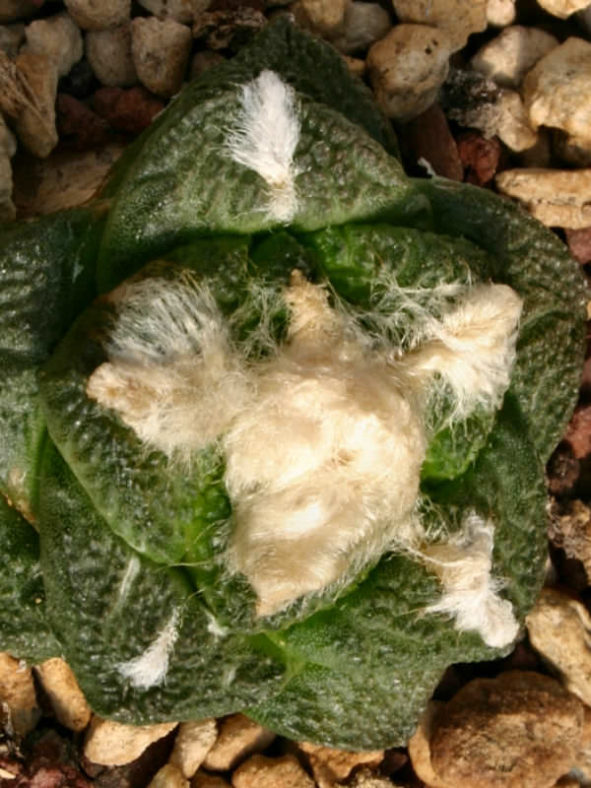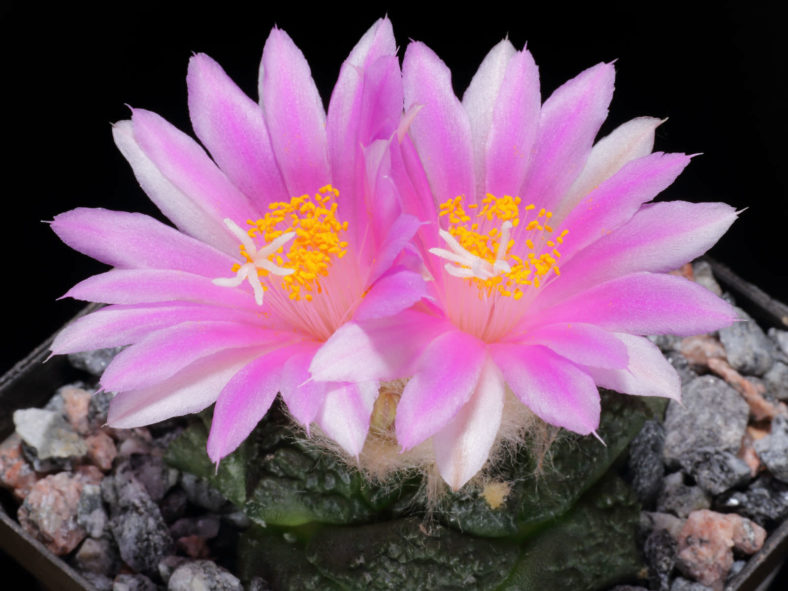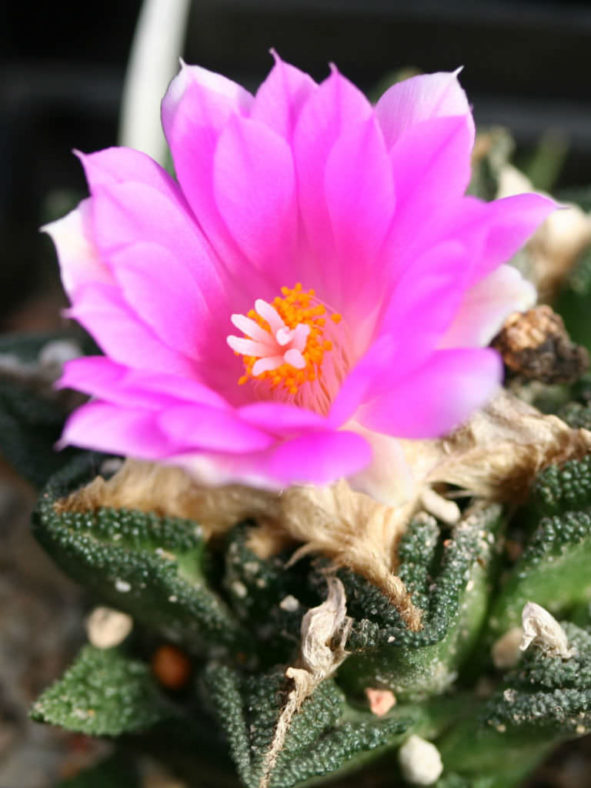Scientific Name
Ariocarpus fissuratus (Engelm.) K. Schum.
Common Name(s)
Living Rock, Living Rock Cactus, Living Stone Cactus, False Peyote, Star Rock, Chautle
Synonym(s)
Mammillaria fissurata, Roseocactus fissuratus, Roseocactus intermedius
Scientific Classification
Family: Cactaceae
Subfamily: Cactoideae
Tribe: Cacteae
Genus: Ariocarpus
Etymology
The specific epithet "fissuratus" (pronounced "fis-zhur-RAY-tus") means "fissured" and refers to the deeply cracked or fissured surface of this species, especially the grooved tubercles that give it a rugged, stone-like appearance.
Origin
Ariocarpus fissuratus is native to northern Mexico and Texas in the United States.
Description
Ariocarpus fissuratus is a geophyte cactus that forms a star-shaped rosette of thick, fleshy, deltoid to hemispheric tubercles with no spines that lie almost flat on the soil surface. It has a large, turnip-like taproot. The rosette can grow up to 8 inches (20 cm) in diameter, while the tubercles are about as long as they are wide and closely packed, forming a coarse mosaic.
In the fall, bright pink-violet flowers appear from the woolly crown of the rosette. The flowers can reach a diameter of 2 inches (5 cm) and last 3 to 4 days. The fruits are white or green with black seeds.
Cultivars

Hardiness
USDA hardiness zones 9a to 11b: from 20°F (-6.7°C) to 50°F (10°C).
How to Grow and Care
Plant your Ariocarpus in soil formulated for cacti. You can buy a cactus mix at your local nursery. Do not use generic soil mixes, as they will not provide enough aeration and drainage. Additionally, using a container without a hole, whether a pot or a terrarium, is a bad idea for the same reason.
Ariocarpus needs a lot of sunlight. However, in hot, dry areas, they can be damaged by excessive sunlight, so you should use a shade cloth to limit the sun or move them out of the sun during the hottest hours of the day. In more temperate areas, direct sunlight is fine.
These cacti prefer to be kept at room temperature or slightly lower and in low humidity.
Water your Ariocarpus when the top of the soil feels dry to the touch, but wait until the entire soil surface has dried out completely before watering again. The amount of time this takes will vary depending on your climate and the size of your pot, if you use one.
Learn more at How to Grow and Care for Ariocarpus.
Uses
This cactus, usually referred to as false or dangerous Peyote, has been known in the Americas since pre-Columbian times. It was possibly used as a substitute for Peyote when Peyote was unavailable.
Links
- Back to genus Ariocarpus
- Succupedia: Browse succulents by Scientific Name, Common Name, Genus, Family, USDA Hardiness Zone, Origin, or cacti by Genus
Photo Gallery
Click on a photo to see a larger version.


